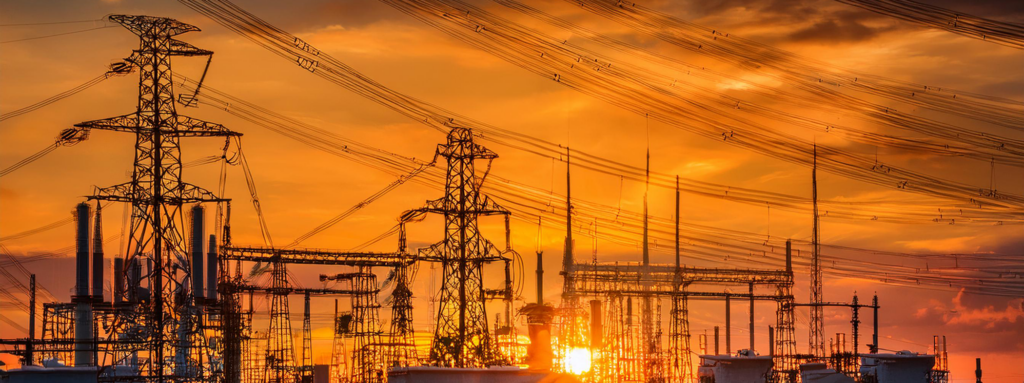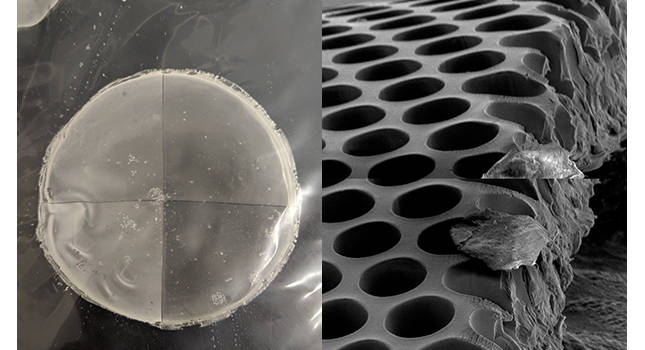Researchers at West Virginia University are attempting to use hydrogen energy as a clean energy alternative.

Energy and Power Insights
- Researchers at West Virginia University are researching a way to make hydrogen energy a viable fuel option to decarbonize the U.S. power and industrial sectors.
- When hydrogen comes into contact with oxygen, it combusts and only leaves water behind as a byproduct, making this process a very sustainable and environmentally conscious energy alternative.
- The team is actively working to create coating to fight the harsh effects that hydrogen has on metal, which includes extreme temperatures quick-acting corrosion.
More than 50 years after scientists first coined the term “hydrogen economy,” the movement to make hydrogen energy a predominant global fuel source could be gaining traction thanks to research led by one West Virginia University engineer.
Xingbo Liu, professor in the Department of Mechanical and Aerospace Engineering, will help develop new, cutting-edge coatings for the blades of turbines used in large-scale power generation. These protective layers will be able to withstand the extreme heat and corrosion of hydrogen combustion but work with the principles and technologies of existing natural gas turbines, primarily in power plants.
The research is promising enough to have early investment from business, and if successful, could play a critical role in linking the energy industry West Virginia has to the energy industry it wants, enabling an energy revolution that’s more like an evolution, where clean power builds on existing resources – in this case, the state’s power generating plants and natural gas reserves.
Most of the funding for Liu’s project comes from a $2 million Department of Energy grant geared toward decarbonizing the U.S. power and industrial sectors, advancing clean energy manufacturing and improving America’s economic competitiveness.
“There are several ways to turn a turbine and generate power,” said Liu, also associate dean for research and endowed chair of engineering at the Benjamin M. Statler College of Engineering and Mineral Resources. “All the most popular ways today use heat. Today, in about two-thirds of turbines, we burn coal or we burn natural gas to turn a turbine, with coal contributing about 20% and natural gas about 40% of the total power we generate in the U.S. Less often, we use a nuclear reaction to heat water and generate steam.”
After nuclear energy, he added, hydropower is the next most common source of electricity, with other clean energies such as wind and solar power bringing up the rear.
When hydrogen reacts with oxygen and combusts, it produces only water in the form of steam – no carbon dioxide, no other byproduct. That steam can spin the blades of a turbine, turning a generator and producing electricity. Because hydrogen has the highest energy per mass of any fuel but produces only water as waste, it’s been part of the clean energy conversation since the 1970s. Nonetheless, entirely replacing fossil fuels with hydrogen as a power source is a vision for a fairly distant future. Liu’s team is focused on a more immediate goal: a turbine that uses a blend of both hydrogen and natural gas as fuel.
“The principle of a turbine that runs on hydrogen is the same as a turbine powered by natural gas, but with hydrogen the combustion characteristics are different from gas,” Liu said. “Hydrogen combustion has two unique characteristics. One is that the reaction produced is pure steam, which can be very corrosive. The other is the temperature. Combustion is really hot and combustion temperatures are sometimes even higher than the melting point of the metal component.”
The hottest part of any turbine is the blades, and Liu’s research is focused on creating coatings that will keep a turbine’s blades from corroding, oxidizing or even melting when hydrogen fuel is added to natural gas.
“People use coatings all the time as simple as nonstick cookware or coatings on eyeglass lenses,” Liu said. “In the case of turbines, there have been two different kinds of coatings. One is called the environmental barrier coating, where you protect your component from the corrosive environment. And the other coating is a thermal barrier coating. It’s a heat insulator, like the oven mitt you wear when you cook. Most of our research is around the thermal barrier coating.”
Liu’s study, “High-Entropy Alloy-based Coating to protect Critical Components in Hydrogen Turbine Power System,” focuses specifically on coatings that are made from a mix of different elements.
“Typically, the materials we are using today have one major element, such as copper or aluminum,” Liu said. “It’s not pure aluminum, it’s an aluminum alloy, but the majority of the alloy is aluminum. With a high-entropy alloy, we don’t have one major element, it’s a bunch of things together, and each one of them has a similar composition. It’s basically a stew, and that gives us some unique properties that we think have hope for this application.”
If the WVU team can engineer a coating that successfully protects turbine blades from hydrogen’s intensely hot and corrosive steam, then power plants will be one critical step closer to running on a mix of hydrogen and natural gas, reducing their carbon emissions and increasing demand for natural gas as an energy-producing fuel source. But Liu believes those aren’t the only benefits hydrogen can deliver to West Virginia, where in 2019, natural gas surpassed coal for the first time as the largest contributor to the Mountain State’s energy economy.
“In West Virginia, we have access to natural gas,” he said. “We are sitting in one of three major gas fields, the Marcellus Shale area. Today, we simply burn that gas. But 95% or more of hydrogen today is made out of natural gas.”
While much of the research will happen at WVU’s Statler College, the network of collaboration extends beyond the University through partnerships with the National Energy Technology Laboratory and Praxair Surface Technologies, a subsidiary of Linde, the world’s largest industrial gas company.
Liu emphasized that, right now, the process of blending hydrogen into natural gas for combustion is “still at the research and development stage. Although there have been demonstrations of hydrogen-fueled turbines, no one has run a turbine with hydrogen commercially.”
Progress is accelerating, though, with some researchers exploring hydrogen as a fuel source for applications beyond the power plant.
“There’s currently an experimental plane that can run on hydrogen,” Liu said. “Google ‘hydrogen plane’ and you can watch the video. Of course, that’s just a demonstration, and it’s not something you can use today. But that’s what research is about, right? You try something new, try new ideas and though some of them will fail, some are going to become useful.”



